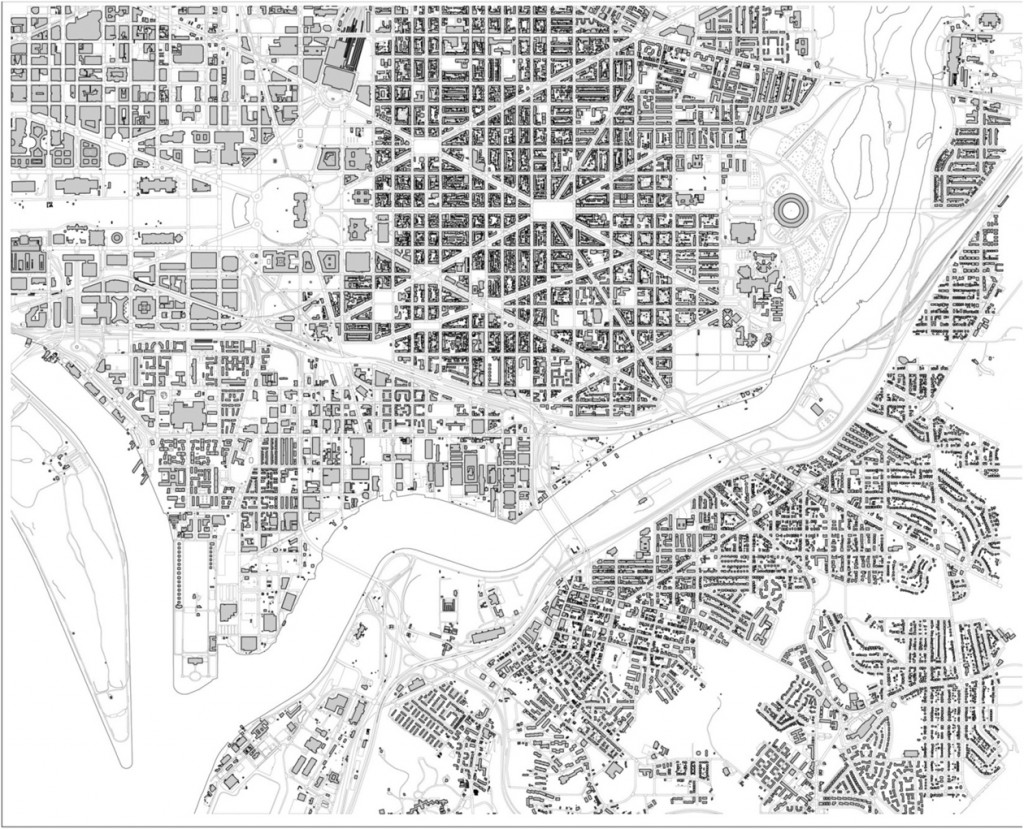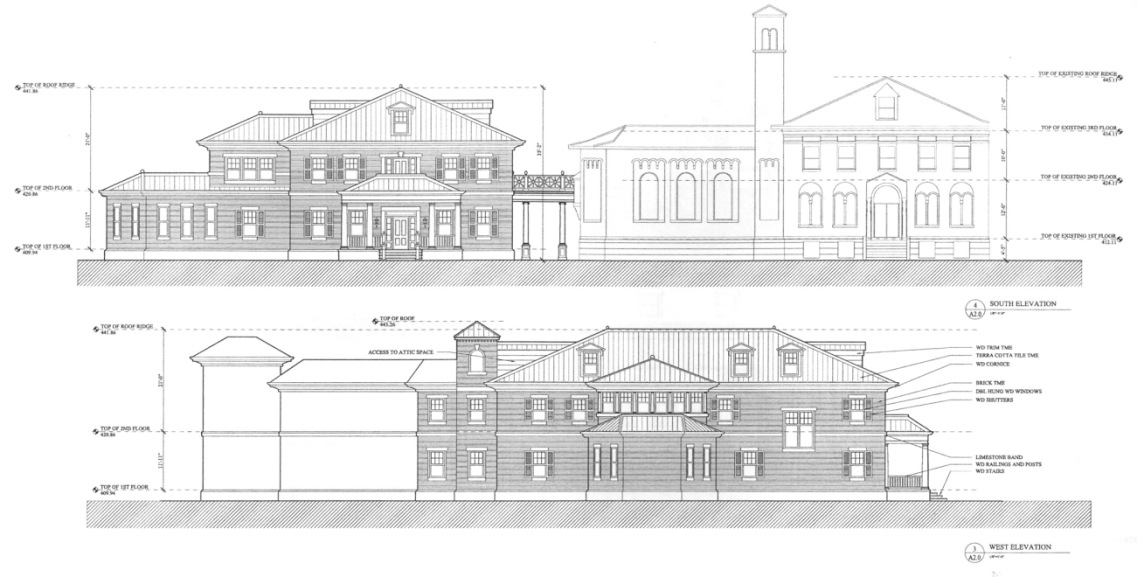Charles McKim really loved those boxy trees, didn’t he? Otherwise, a hidden gem.
While American University’s campus plan is a net benefit for Ward 3, the architecture currently proposed for the campus is mediocre at best. Beyond the land-use planning, East Campus and North Hall’s proposed buildings offer little in terms of aesthetics. The spaces are disorganized and the forms are uninspiring. On the outside, the buildings don’t relate the street well, and the facades present foggy contextualism.
Instead of well-executed buildings, the design revolves around appeasing neighbors while important aspects are left undeveloped.
For East Campus and some of the Main Campus buildings, AU hired Little Diversified Architectural Consulting, a Charlotte-based firm with offices in Alexandria. They have designed a large dorm at Catholic University, Opus Hall, similar in style and form to AU’s proposed facilities. Other design work was executed by the university’s large in-house architectural group and the firm of McKissack & McKissack.
First was the excellent constructive criticism by Alex Block. But he outdid himself with another article arguing for an ecologically balanced solution, which built on a post by…
…Mammoth, who delivered a strident critique of the more Eurocentric and anti-wetland flaws in the proposal. I commented on the article, and the exchanges between me, J.D. Hammond, and Rob Holmes are all good dialogue. The example of the Port Lands project in Toronto is worth examining in depth.
Straßgefühl, the only other blog whose name rivals mine, offers a counter-proposal based on the Sumidagawa river in Tokyo. The post opens up a new direction of thought, but it’s marred by insisting that Buras would be building a pseudo-historical development, since the proposal has no pretensions of history.
Obviously there was the news coverage too. BDC offered his thoughts, Ryan Avent jumped in with a skeptical but enthusiastic reception, JDLand noted that the plan exists, and DCist had its usual commentary.
If you’re still thirsty for information, you can look at the earlier reactions: City Block’s initial thoughts and then a look at precedents. Straßgefühl kinda-sorta liked it before; and Spencer Lepler was generally ok as well.
But it is great to see this kind of dialogue happening. The issues of nature, tradition, environment, autonomy, and culture have a lot of intersections not yet explored. The only thing everyone agreed on: tear down the highways. Interesting, no?
Bonus: Here’s an in depth article about Buras from Las Vegas Weekly. Read it!
The public character of Washington has grown around two grand plans. First, Charles L’Enfant laid out the city as a sacred grove for the marking of America’s history. One century later, the McMillan Commission restored and expanded upon that original design to include the history of the Nineteenth Century. Now, The city center has grown up in the second hundred years since then, enough for Congress to declare the Mall closed to new development. Meanwhile, the rest of the city has built up or spread out into suburbs. In light of the last fifty years, a group of traditional Washingtonian architects have developed an audacious proposal for the next lifetime of growth, McMillan Two. Fulfilling some less-known intentions of the McMillan Plan with slight modifications, this plan essentially calls for bringing Paris, mansard , Seine and all, to the Capital of the United States.
Developed by the Build DC Initiative and architect Nir Buras in particular, the design has been sponsored by the Mid-Atlantic chapter of the Institute of Classical Architecture and Classical America, the National Civic Arts Society, with some support from the DC chapter of the Congress for New Urbanism. Buras’s philosophy draws hard from tradition: we know what is beautiful and what works – and we should do that. Downplaying strident formal innovation, the relationship buildings have to precedents in a cultural tradition guides design. For McMillan Two, France provides that tradition, particularly L’Enfant’s garden models and the Beaux-arts education of Burnham, McKim, and Olmsted. Though the partners have kept much of the project under wraps, Buras has recently begun sharing the outlines of this radical rethinking of DC’s future, namely that “Washington remains the most beautiful city in the nation.”

Continue reading ➞ McMillan Two envisions a Classical Anacostia
First the good news: The Tenleytown Library will break ground today, September 23rd at 10:30 AM, with Mayor Fenty and perhaps some protesters in attendance. The Economic Development office decided to spend $650K-1M to build stronger girders in the rear of the building, to permit future growth above and to the rear of the library. Across Wisconsin, the renovated and restored fields at Fort Reno Park will open on October 3rd. Another contentious site, the three athletic pitches look great. I can’t wait to see people enjoying the park and all its earthly delights again.

Opus Dei revealed more details about their plan for the Yuma Study Center, a residential and educational facility behind St. Ann’s Catholic Church. Going before the HPRB, Moses of the Anacostia Nir Buras presented a handsome traditional home that would stand west of the Covenant of the Bon Secours building. Alvin Holm‘s design for the building is in a humbler strand of Classicism than the grandiose variety that Washington is known for, and that’s really good to see. As you can see, the new building would have nearly identical proportions and mass, but would use a more Chesapeake style and add a porch to indicate a residential character. However, I think the building would be better to stand on its own rather than be a redecorated twin. Still, positive.
And below, the ARD gives us Barabbas.
Continue reading ➞ North of Tilden: In the name of the Father, the Builder and Community Spirit

You can take a gander at other views of the plan here, although you might be surprised at who owns them. His explanatory drawings and diagrams offer dead-on critiques of the City Beautiful and Modernist planning that have turned central DC into a lifeless pile of stuttering architectural gigantism.